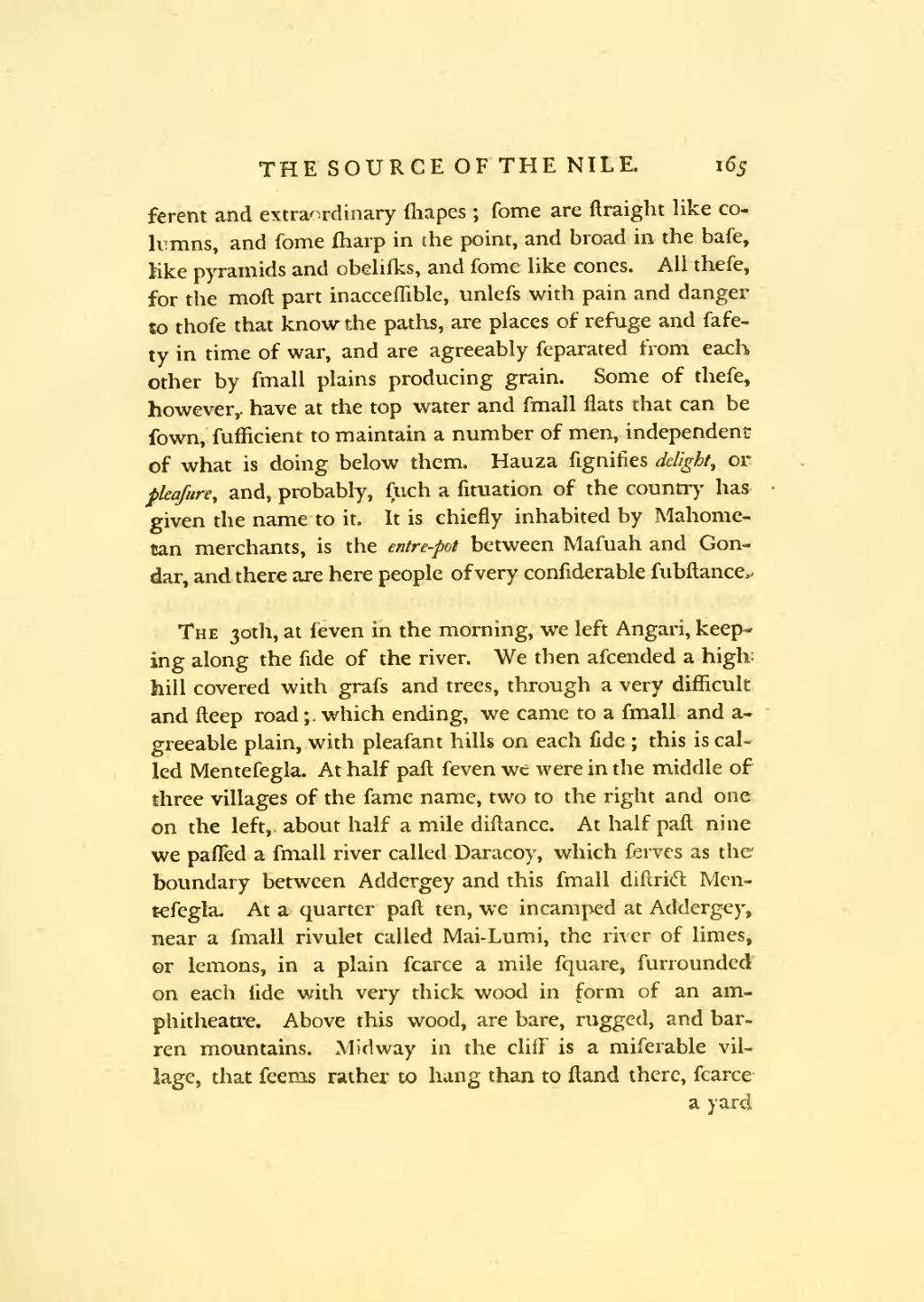ferent and extraordinary shapes; some are straight like columns, and some sharp in the point, and broad in the base, like pyramids and obelisks, and some like cones. All these, for the most part inaccessible, unless with pain and danger to those that know the paths, are places of refuge and safety in time of war, and are agreeably separated from each other by small plains producing grain. Some of these, however, have at the top water and small flats that can be sown, sufficient to maintain a number of men, independent of what is doing below them. Hauza signifies delight, or pleasure, and, probably, such a situation of the country has given the name to it. It is chiefly inhabited by Mahometan merchants, is the entre-pot between Masuah and Gondar, and there are here people of very considerable substance.
The 30th, at seven in the morning, we left Angari, keeping along the side of the river. We then ascended a high hill covered with grass and trees, through a very difficult and steep road; which ending, we came to a small and agreeable plain, with pleasant hills on each side; this is called Mentesegla. At half past seven we were in the middle of three villages of the same name, two to the right and one on the left, about half a mile distance. At half past nine we passed a small river called Daracoy, which serves as the boundary between Addergey and this small district Mentesegla. At a quarter past ten, we incamped at Addergey, near a small rivulet called Mai-Lumi, the river of limes, or lemons, in a plain scarce a mile square, surrounded on each side with very thick wood in form of an amphitheatre. Above this wood, are bare, rugged, and barren mountains. Midway in the cliff is a miserable village, that seems rather to hang than to stand there, scarcea yard
